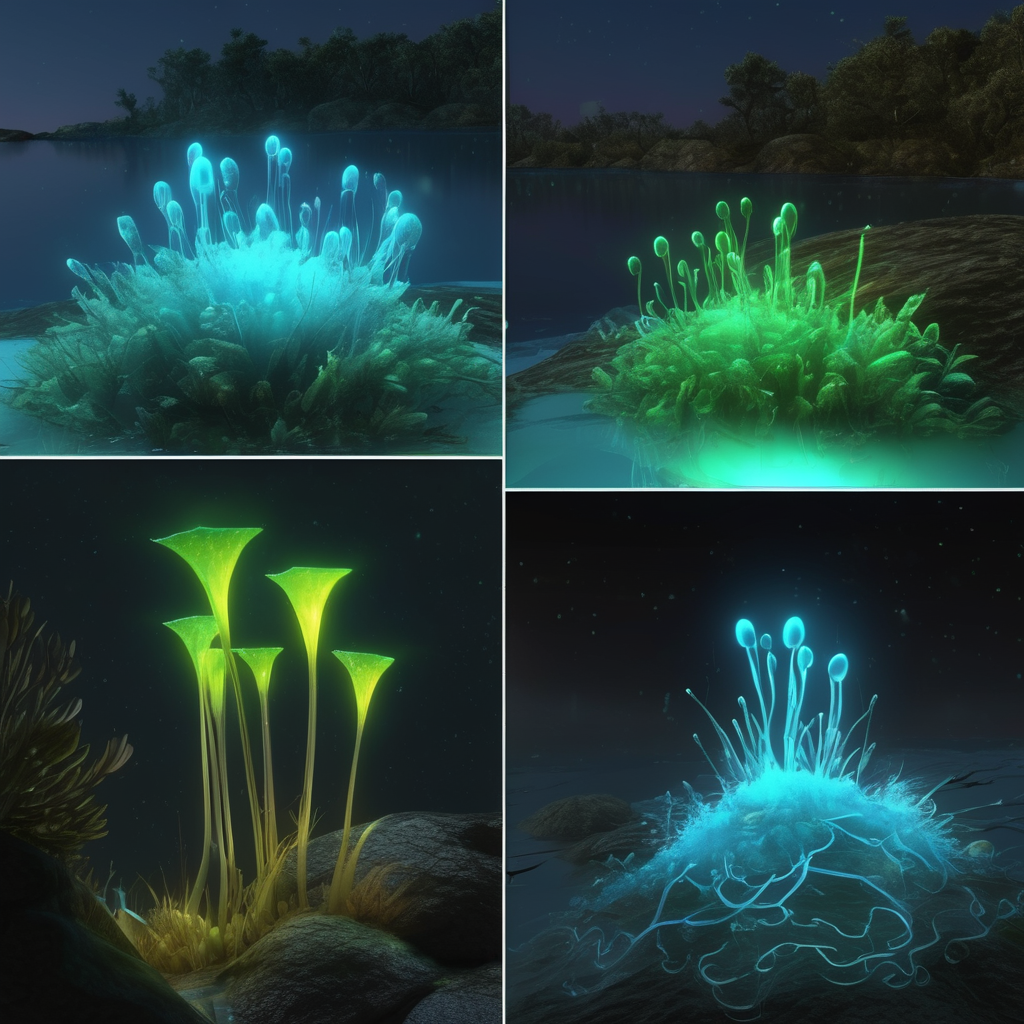Bioluminescence, the ability of living organisms to produce and emit light, is a fascinating phenomenon that occurs in various species across the animal and plant kingdoms. From the mesmerizing glow of fireflies to the ethereal shimmer of bioluminescent algae in the ocean, these organisms captivate our imagination and provide valuable insights into the natural world.
Bioluminescence is a biochemical process that involves the conversion of chemical energy into light energy. It is typically achieved through a reaction between a light-emitting molecule called luciferin and an enzyme called luciferase. When the two components interact, a chemical reaction occurs, releasing energy in the form of light.
Bioluminescence is a wonder of Mother Nature herself and shapes the communication of different species. Fireflies use bioluminescence for communication and courtship.
Male fireflies emit flashes of light to attract females of the same species. Each species has its own unique flashing pattern, serving as a form of visual communication in the darkness of the night.
Hawaiian bobtail squid are unique animals that contain bioluminescent bacteria in specialized light organs, which provide camouflage by matching the intensity and color of moonlight, making the squid less visible to predators below.
Deep-sea fish and invertebrates also possess light organs that emit bioluminescent signals. These signals are used to attract mates, lure prey, or distract predators. The mesmerizing light displays produced by deep-sea organisms in the darkest depths of the ocean are a testament to the adaptability and ingenuity of life in extreme environments.
Bioluminescent jellyfish, such as the infamous Aequorea Victoria, possess specialized cells called photocytes, which emit light. These jellyfish can produce a green fluorescence protein, and by inserting the gene responsible for this protein into other organisms, scientists can track cellular processes and visualize the inner workings of living systems. This method of study revolutionized biological research and eventually earned a Nobel Prize in Chemistry.
The ‘red tide’ phenomenon occurs when large amounts of bioluminescent bacteria join together, peacefully floating on the ocean, glowing red. These blooms of bioluminescent organisms create stunning visual displays, can be used as indicators of environmental conditions, and play a role in nutrient cycling and ecosystem dynamics.
Furthermore, the study of bioluminescence has led to significant advancements in various scientific fields. The discovery and understanding of the biochemical processes underlying bioluminescence have contributed to fields such as biochemistry, genetics, and medical research. Bioluminescent proteins have been utilized as powerful tools in molecular biology, enabling scientists to track cellular processes and visualize biological structures with great precision.
In conclusion, bioluminescent organisms offer a glimpse into the remarkable diversity and adaptability of life on Earth. From fireflies and jellyfish to bacteria and deep-sea creatures, these organisms exhibit fascinating mechanisms for producing light. The phenomenon of bioluminescence serves a multitude of purposes, including communication, camouflage, and predation. Moreover, the study of bioluminescence has propelled scientific advancements and provided valuable insights into biological processes. The captivating glow of bioluminescent organisms continues to inspire and ignite our curiosity about the natural world.







Leave a Reply